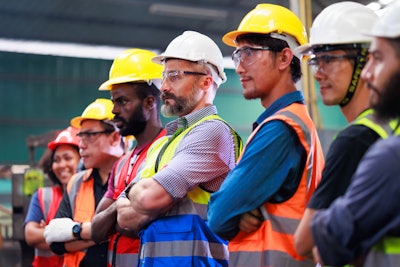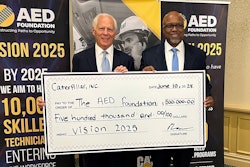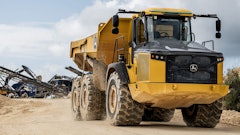
The skilled labor workforce is constantly shrinking. The industry is bracing for impact as it faces the silver wave. While the labor shortage is heavily affecting the skilled trade industry, employers and companies are looking for ways to draw in more workers and keep them for as long as they can. This is a hefty challenge. That said, there are a few important ways that companies and industry executives can start making changes to advance themselves to be more ideal employers. There are also ways to make the industries better known and available to the upcoming workforce, as well as continue to make the skilled trades an appealing industry to work for long-term.
Some of the best ways to appeal to current and potential employees include updating training programs, making them more technology-based, and making training cycles shorter. Many people in the current workforce don't feel confident even if they are qualified so making job opportunities that they can start in and then move up to will make them more likely to apply. Workers want to know that they are being considered and appreciated so once you have them, celebrate milestones and acknowledge accomplishments. To bring in more potential employees, it's essential to start exposing those who are still in school so they know that a skilled trade route is an option and one with many different paths.
The Problem
"If we're all fighting over a small group of people, then that's still not going to solve our problem long term. What we think about as an association and as an industry is how do we get to people younger?"
—Josh Nickell, vice president of the Equipment Segment at the American Rental Association
The skilled labor shortage started and has continued due to a few factors, creating the perfect storm. The upcoming workforces are seldom introduced to the different skilled trade fields and as a result, not nearly enough people consider working in the industry. One of the issues with the labor shortage is that it is not cut and dry.
The incoming workforce is accustomed to technology and is comfortable learning through videos and interactive programs. But most training used currently hardly involves technology, missing a huge opportunity to engage the younger generations.
BILT released a research report that indicated that over 30% of the respondents said recent hires would resonate best with immersive digital training and yet it currently only makes up 2% of the present training methods. With this in mind, 44% of the respondents still said they felt their company had an industry-leading approach.
A Strong Disconnect
Miscommunication or lack thereof is hurting the industry as well. Technical trainers who are on the ground with the workers are more likely to have a better sense of the trending issues, but there continues to be a disconnect. There are disparities when it comes to what the executives think makes up training versus what the technical trainers are saying actually happens. For example, 20% of executives felt that self-paced videos would work best with new hires, as opposed to the 35% of training managers who agreed. With executives ultimately making the calls, the problem becomes that they don’t see the issues. In the study, managers were twice as likely to say that their training method needed some work compared to the executives. The executives tend to be detached from the reality of the training methods and programs.
The Rental Industry
The rental industry faces the same labor shortages that the construction and other skilled labor industries have been facing.
Josh Nickell, vice president of the Equipment Segment at the American Rental Association (ARA) said, “The rental industry [and] the whole construction industry is experiencing a huge shortage of skilled trades. For the equipment rental industry, in particular, and construction, … it tends to be mechanics and drivers — CDL drivers, commercial drivers, regular drivers — and then anybody with the skill sets for repair and maintenance of equipment are by far the hardest roles to fill.”
With all of the skilled trade industries fighting to get more employees, the labor pool continues to get narrower and less desirable for current workers.
The New Generations and Job Hopping
In BILT’s research, it was revealed that Gen Z and Millennials tend to change jobs more frequently, and with the current training cycles being long with an average of nine weeks of training, it’s no wonder many are quickly losing interest.
Apart from training being an issue that threatens the industry’s ability to keep employees, problems like feeling underappreciated at work can result in more employees doing job hopping.
“During the pandemic, we saw many businesses [that] supported their employees during a difficult time, whereas others completely lacked compassion. Employees took note of that, and as the economy began to ramp back up — along with their options — they seized the opportunity to prioritize companies where they felt appreciated,” said President and Chief Operating Officer Amit Pal Singh of Labor Finders.
When the pandemic hit and changed the entire dynamic of the workforce, the workers took the reactions of companies during that challenging period and realized the importance of feeling valued. Job-hopping was a major result of these. Now, it is often the case that employers are off-put by some of the newer generations’ ethics, actions, and work habits. But this negative mindset isn’t going to improve the situation.
“We have a tendency to judge the generation behind us and see only the negatives rather than see the positives. The generation that's coming into the work environment now appreciates purpose-driven work, they appreciate milestones,” Nickell said. “Find those good things and appreciate those good things and you'll be a lot more successful. You're not going to change the generation, just like nobody changed your generation, but you can work with that generation.”
What Can Be Done
Since the industry has been struggling with labor shortages for a while, it is obvious that some much-needed changes are necessary to begin to work on the problem. Something that should be focused on is how to recruit more employees. There are a few things to consider.
“One of the things that we've learned recently that really kind of surprised me is that people are graduating a trade school with certifications, amazing certifications, and they don't feel qualified,” said Nickell.
Allowing growth and progress in the way job positions are set up is likely to make new hires more comfortable applying and starting in the skilled trade industry. Companies must find new ways of attracting and keeping employees.
Singh said, “Tactics that might have worked for them previously have become obsolete. In some cases, we’re seeing wages continue to climb. In other cases, we see workers seeking more flexibility in schedules and hours, which is an increasing post-pandemic desire.”
With all of the industries trying to get and keep new employees, not enough is being done to recruit the future workforce.
Nickell explained, “If we're all fighting over a small group of people, then that's still not going to solve our problem long term. What we think about as an association and as an industry is how do we get to people younger? [One] of the ways that we're doing that, … is we participate a lot with the Girl Scouts. It's a group of people who like to work with their hands [and] to be outside, it's a really good potential group for us long term that is underrepresented in the construction industry and in the rental industry.”
Nickell said that offering scholarships to those interested in the rental industry has been quite successful for ARA. He also suggests that companies try posting jobs in a job portal to better spread job opportunities around the country.
In addition, it is important to work with the new generations’ trends. It is known that they tend to have a shorter tenure. If that’s the case, create shorter training. It is important to see what they do that is good and roll with it. The incoming workforce tends to be very tech-savvy which means that they would better understand digital training. There is a need for more updated forms of training.
The BILT survey found that 89% of executives were concerned that their training programs were inefficient. Inefficient training programs caused 43% of respondents to worry about increased workplace injuries and 39% to point out fulfillment delays or missed deadlines. These concerns revolve around training. Something must be done to modernize and improve the current training programs. Training is the factor that the labor shortage is dependent on for change. Looking into and catering to the newer generations and how they best function is vital to the revival of the skilled trade workforce.




















